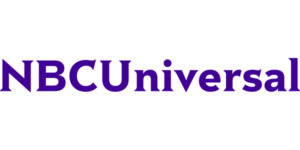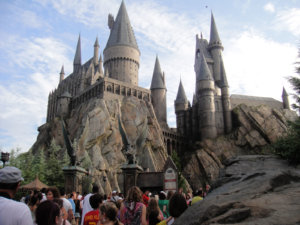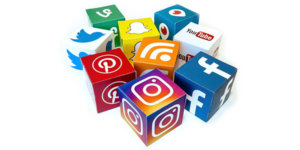Media Corporations: What You Need to Know
Published on November 8, 2017, at 12:02 p.m.
by Maggie Schneider.
Disney. Depending on who is asked, the name will conjure different ideas for different people. For some, they will immediately think of the animated movies produced by Walt Disney Animation Studios. Others might remember their last visit to one of the Walt Disney Parks and Resorts, or they might remember the television show they saw on the Disney Channel last night. Some might even think about when they went to a Disney Store or when they read an article on Oh My Disney, produced by the Disney Digital Network. Whatever they think of, each division — from the parks to the studios to the merchandising — is distinctly Disney, carrying the brand’s message forward.
With so many different projects and divisions, large media conglomerates are appealing employers for public relations professionals, especially since PR plays a hugely important role in creating the company’s brand. But with the enormous size comes increased complexity and challenges that future PR professionals need to be aware of. The first challenge is figuring out how all the different divisions fit together into a large corporation.
How the companies are organized

This idea of one large media corporation consisting of many different divisions is not unique to Disney. NBCUniversal is a similar company made up of different brands such as Universal Pictures, the Universal Studios parks and NBC Entertainment. According to Daniel Wheatcroft, a former executive at Universal, each of these smaller parts of the corporation generally acts independently, each responsible for its own profit and loss (P&L). Universal Pictures only handles film distribution, marketing, and sometimes production, while Universal Parks and Resorts is solely responsible for building, running and promoting the parks and resorts around the world.
Though each division’s marketing departments are relatively autonomous, when faced with a
media franchise such as Disney’s Star Wars or Universal’s Minions, they all have to stay on-
brand. The film studios, the parks, the television/cable distribution, etc. — all have to adhere to the
same messaging in order to present a consistent brand to the public.
That’s where the public relations and communications professionals come in.
Where PR fits

In addition to the creative producers — such as television and film producers and directors, park engineers, and toy designers — each division has its own executives, research, marketing, paid advertising, and publicity. It is vital for the PR and advertising departments to communicate in
order to have a shared brand vision.
As Wheatcroft puts it, “Within a vertically integrated corporation, communication between the marketing divisions is essential for effectively using the assets you have to promote the product. For example, Universal Pictures has its asset, Tom Cruise, to promote his new movie. The filmed entertainment publicity department books him on Good Morning America. Then the Cable Entertainment Group wants to know if Tom will be available to promote the video release. So the discussion might go something like this: ‘If the film is a success, Tom will be available on a limited basis – but we should primarily use other actors to promote the video release, thus broadening the brand. If the film does not do well at the box office, it may be counterproductive to the brand to use him and therefore we will reinvent the marketing campaign based on audience response.’ So all these things are rolled out carefully, with backup plans based on profitability, and each division has to know what every division is doing in order to maximize the brand of our movie and the brand of Tom Cruise.”
In order to coordinate the publicity and social media efforts, most media corporations have an overarching corporate marketing department, which PR generally falls under, that will put together a plan with the marketing and PR departments of each separate division to create a master plan of the outlets and publics that each division will reach out to. This organized effort creates the brand around the products, specifically targeting each desired demographic and drawing them in time and again.
The challenges for PR
This well-oiled machine does not always run so smoothly, though. There are several challenges and hiccups that can arise. PR professionals should always be aware that they might not be the only ones speaking for the company that they represent.
According to J. Suzanne Horsley, a professor in the Department of Advertising and Public Relations at the University of Alabama, “Any employee can share the message of the organization through maybe their own personal social media feed, while meeting someone on the street, when they are interviewing candidates for a job. They don’t have to be in communications to communicate a message about the organization, so internal communications are critically important for any organization.”
In the movie industry, some of the people who might be speaking for the company to promote a film might be actors or directors. These talented people are usually coached by publicists or other PR professionals in the messaging around the movie that they are going to be speaking about. However, sometimes these people slip and make what could be costly mistakes, such as when Tom Holland accidentally let details slip about more Spider-Man movies on the way after Spider-Man: Homecoming. Then it’s the PR person’s job to mitigate any damage and get the messaging back on track.

One of the biggest challenges, yet potentially one of the biggest assets, for a PR professional in a large media conglomerate is dealing with social media. Almost all of the influencers on social media are unaffiliated with any large media company, so the PR departments have virtually no control over what these personalities say about their product. A meticulously crafted, painstakingly researched, multimillion dollar advertising and PR campaign can be undone by certain unfavorable reviews or issues brought up by potentially anyone on the internet. Wheatcroft uses the backlash against the 2017 movie “Ghost in the Shell” as an example of the damage social media can do to a film’s box office.
At the same time, social media can bring even more people in to see a film. “One thing that we have learned in marketing (and this works across platforms, by the way) is that if you engage people early in the production of a movie through social media, it makes them feel like they had a part in the making of the movie. So then it doesn’t matter how the film turns out. They will go see that movie because they feel authorship,” said Wheatcroft.
With the potential to make or break a movie, social media messaging will only become more vital to the overall marketing of any product produced by a media corporation. Unfortunately, social media is still relatively young as a PR tool, yet rising PR professionals need expert skills in predicting the response from key influencers on social platforms.
What the future holds
With an ever-increasing rate of change in the digital world of communications, it is difficult to say exactly what students need to be learning now. Social media skills is certainly key, but Horsley maintains that certain foundational skills will remain vital to PR.
“I think at a large company, interpersonal skills become even more important. You have to know how to talk to people that are on all levels of management. You have to feel comfortable talking with people you may not know well because the organization is so big you’re likely to not really know people outside of your immediate group,” said Horsley.
Other skills like being able to write well and finding information surrounding one’s own organization will always give any PR professional the tools to adapt to any situation.
The world of the large media corporation is exciting — dealing with A-list stars, knowing about movies years before they are announced to the public, helping people create unforgettable memories — but it is also formidable. For some rising PR professionals, these challenges are an exciting chance to create the cutting edge in PR, and the rest are waiting with baited breath to see what new wonders will come from the likes of the Disney dreamers or the Universal innovators.




